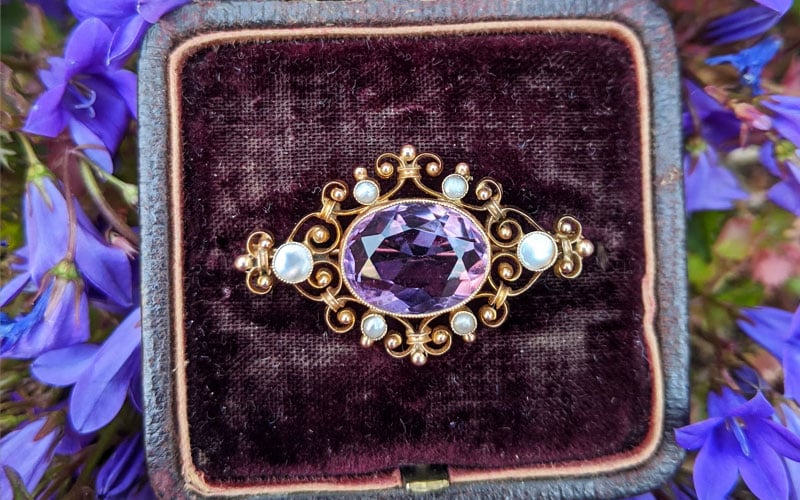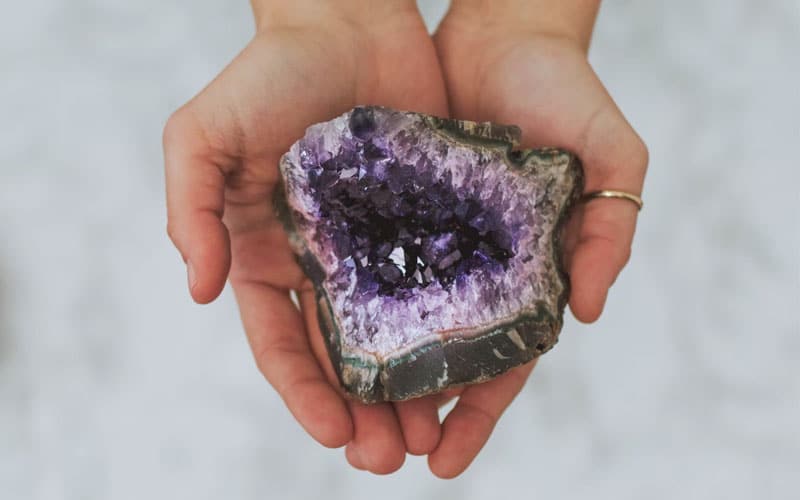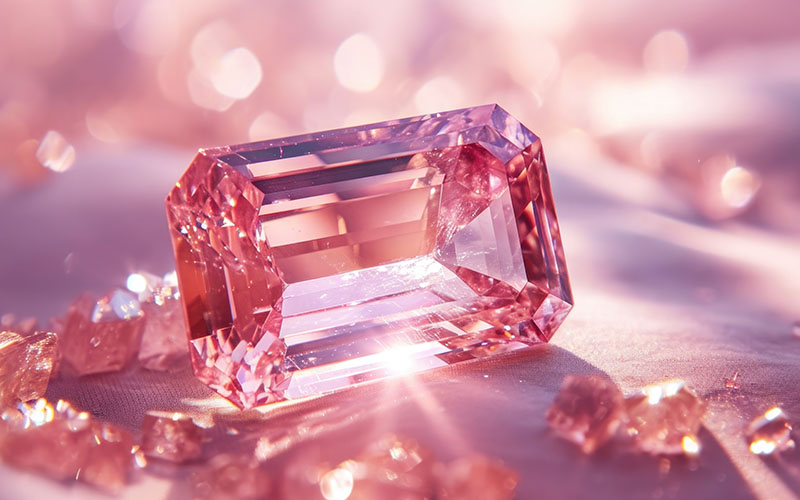Amethyst, the birthstone of February, is an appealing gemstone with a long and fascinating history. Throughout the centuries, amethyst has been valued for properties other than its purple aesthetic.
Here are some fun facts about the beautiful birthstone of February.

Fun Fact #1: The sobriety stone
The name “amethyst” comes from the Greek word “amethystos,” which translates to “not drunk.” The ancient Greeks placed amethyst in drinking vessels because they believed amethyst would prevent or reduce drunkenness.

Fun Fact #2: Amethyst becomes Citrine
A variety of quartz, amethyst’s purple color is due to the presence of iron and manganese. The main absorption bands in UV spectra occur at 950 nm, 540 nm and 360 nm. Those absorption bands change after exposure to high temperatures (500C+), turning it to the dark yellow or orange of citrine, another variety of quartz. Given the rarity of natural citrine, much of the citrine you find on the market is actually heat-treated amethyst. Lower levels of heat produce a yellow and purple crystal called ametrine.

Fun Fact #3: Strong spiritual symbolism
Amethyst has a rich historic association with spirituality, wisdom, and clarity. In the Middle Ages, amethyst was highly valued by royalty and clergy. It was believed to have healing powers and was often used in religious jewelry and ornaments. It was also believed to have protective powers and was worn by soldiers in battle. The stone is said to enhance intuition and psychic abilities, and it is frequently employed in chakra healing and balancing. It has an association with the crown chakra, which is the center of spiritual awareness and connection to the divine.
Amethyst and other types of quartz were used in the past by Buddhist monks to heal and diagnose diseases. Monks in Tibet continue to incorporate amethyst in their prayer beads. The beads are used during prayer and meditation to aid in concentration, as the stone is considered calming to the mind. The friendly purple gemstone continues to be used in meditation and spiritual practices in many places around the world.

The availability of amethyst
Amethyst is mined in many parts of the world, including Brazil, Uruguay, Russia, and Zambia. The quality and price of amethyst can vary depending on location and the quality of the gemstone. The main driver of value is determined by the hue and saturation of that specific stone’s color. The rarest shade of amethyst is known as “Deep Russian.” This shade is so rare that it’s priced according to demand from collectors and enthusiasts, who are constantly on the lookout for it.
Happy Birthday, February babies





